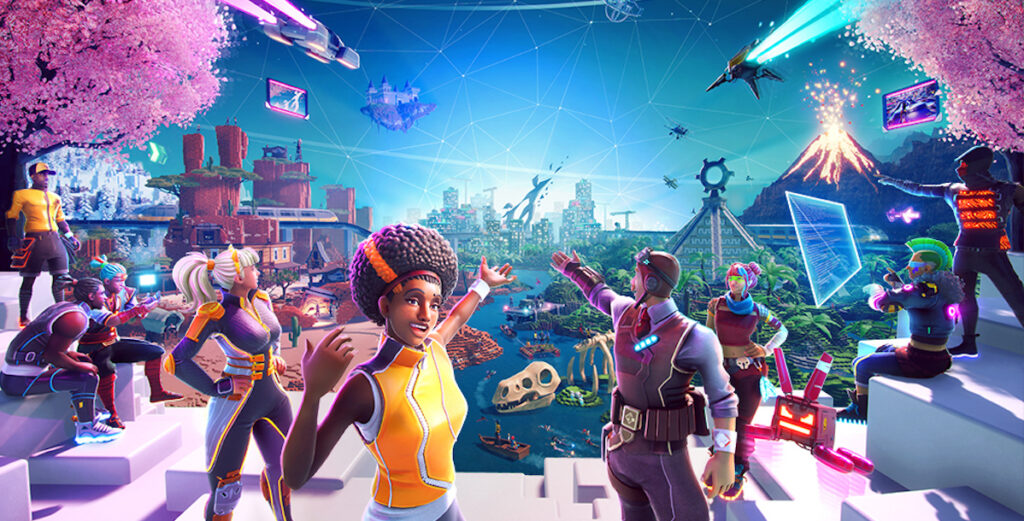Suppose you had a single platform on which you could search for a song and find out the names of every single person that has touched it, from inception to delivery. Imagine the possibility of a revenue-sharing model for songwriters, producers, sound engineers, and everyone in between, which would pay artists their fair share of royalties upfront. Imagine a world of increased accountability and trust between artists and large media corporations.
This ideal platform can be made a reality with blockchain.
In a thread on Twitter, Linkin Park’s Mike Shinoda explained some of the thoughts behind selling digital art for $30.000.

“Even if I upload the full version of the contained song to DSPs worldwide (which I can still do), i would never get even close to $10k, after fees by DSPs, label, marketing, etc.”
An artist’s ownership of this work of art is tracked by a nonfungible token on a blockchain. Blockchains are distributed ledgers commonly used for tracking things like ownerships of computer programs or digital currencies.
There was a massive drop in art income, however. Streaming revenue was not enough for most. So, experimentation began. Artists began to build revenue streams through livestreams, fan clubs, ticketed virtual meet & greets, online courses, and NFT auctions.
The content they buy is easily duplicated, so why do they buy it?
In days before Spotify had 150M paying subscribers, music industry conference panels bemoaned the fact that people are willing to buy coffee or a bottle of water but will not spend that much money on a download. While music is still subject to philosophical debates about its value and price, the gaming industry, which also faced pirate attacks, has pioneered ways to get people to pay for completely virtual items.
Game play helped to contextualize the value of virtual items, such as virtual real estate or vanity items – thereby making them more appealing to those who spend many hours inside games. A Dota2 item sold for $38,000 in 2013 – an item that doesn’t improve play but just makes you look cooler. Club Neverdie in Entropia sold for $635,000.
The same dynamic is emerging now ten years later for music. Owning a NFT does not always mean that you can’t share the work of art associated with it. NFTs are currently viewed as rights to the metaverse.
Metaverse

Metaverses are basically virtual shared spaces. One popular example of such a space is Roblox, a gaming platform where users can build their own experiences that are all interconnected through Roblox’ economy (called Robux).
Fortnite has some of the ingredients already, but hasn’t developed a marketplace with low barriers to entry yet, like Roblox has. In spite of that, the following interview with Epic Games CEO Tim Sweeney is a good introduction to the topic of the metaverse.
The convergence of various pandemic-accelerated trends (VR/XR, virtual economies, crypto) and the expectations of people investing in these domains is currently driving NFT’s success stories ($750,000 CryptoPunk sale, $666 Panther Modern sale, $100k virtual critter sale). Crypto is emerging as an anticipated layer of connectivity for transactions in the metaverse, 12 years after the release of Bitcoin and the introduction of blockchain technology.In addition to making many early adopters extremely wealthy (as have other cryptocurrencies), Bitcoin has helped fuel investments in art, energy and Tesla.
It is helpful to see the crypto space as a metaverse without an interface that looks like a video game, because participants are still players: they are building their own world, their own infrastructure.
In that world, they are concerned about what they look like, just as people in virtual worlds care enough about their appearance to buy virtual currencies like Robux (to the tune of billions of USD in 2020).
Having art in your micro-community makes you feel good about yourself (in a meta-community, a gaming clan is part of a general community that is part of a broader, global community).
In addition to altruism, supporting art is cool, but counting on altruism tends to result in comparisons between artists and bottled water. Think about the intrinsic value of an artwork instead.

